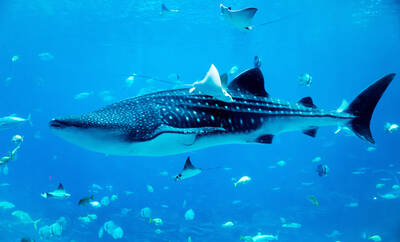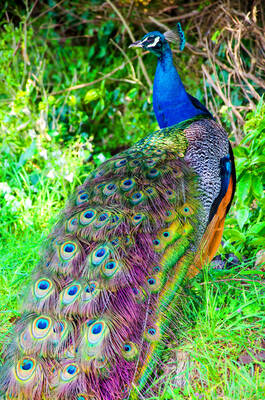With camping becoming increasingly popular, many visitors try to tent out and cook food at Yushan National Park’s Tataka Saddle despite bans against such activities.
To address the issue, the Yushan National Park Administration Office has invited the competent authorities to explore possible solutions. It says it will designate a camping area in the Tataka Saddle in the future, but first it will introduce parking charges at parking lots in the area to prevent campers from occupying parking spots for camping purposes, and work on improving the park’s management.
Visitors who camp out in the park illegally will be given a warning by patrol officers. Later, if the person is found to have continued to camp out, they will receive a ticket and could be fined NT$3,000 for violating the National Park Act.

Photo courtesy of Yushan National Park Administration Office
照片:玉山國家公園管理處提供
The Yushan National Park Administration Office says the competent authorities esentially agree with the plan to designate a camping area, but because building a camping area involves the planning of water and electricity supply, choosing a place of the appropriate size and evaluating possible geographic and ecological impacts, it will not hash out the details until experts have inspected the area and made assessments. The goal is to provide high quality camping services for recreational visitors without sacrificing the ecological integrity of wildlife, the office says.
(Liberty Times, translated by Tu Yu-an)
隨著露營日益盛行,禁止露營的玉山國家公園塔塔加園區,近來因遊客任意設帳野炊而衍生不少亂象。
為此,玉山國家公園管理處特別邀集相關單位研商,表示未來將在園區規劃露營區,現階段將加強管理面並擬將免費停車場改為收費制,避免民眾惡意占用車位。
遊客若違規設帳露營,巡警將先勸導,第二次巡查時若仍未離開,就將嚴格取締開單告發,最高可依「國家公園法」處三千元罰鍰。
玉管處強調,設置露營區因牽涉水、電供應、腹地範圍,以及地質風險、生態衝擊等,雖土地所有機關原則上同意,但仍將邀集專家學者現勘評估,盼能在兼顧生態與遊憩品質的前提下提供遊客露營服務。
(自由時報記者劉濱銓)

The third-hottest July worldwide ended a string of record-breaking temperatures last month, but many regions were still devastated by extreme weather amplified by global warming, the European climate monitoring service said Thursday last week. Heavy rains flooded Pakistan and northern China; Canada, Scotland and Greece struggled to tame wildfires intensified by persistent drought; and many nations in Asia and Scandinavia recorded new average highs for the month. “Two years after the hottest July on record, the recent streak of global temperature records is over,” Carlo Buontempo, director of the EU’s Copernicus Climate Change Service, said in a statement. “But that

Whale sharks are the largest species of fish in the world. They aren’t related to whales, but take their name due to their enormous size. At full maturity, whale sharks measure around nine or 10 meters long and can weigh from 15,000 to 40,000 kilograms. Whale sharks live in warm waters, with about 75% of them found in the Indo-Pacific region. They can migrate thousands of kilometers to different feeding grounds, but at a slow speed of 5 km/h on average. Whale sharks have a broad, flat head and are typically brown or gray in color. Their distinguishing characteristic

Continued from yesterday(延續自昨日) https://www.taipeitimes.com/News/lang Whale shark reproduction has long been a mystery for scientists. However, a significant discovery in 1995 off the eastern coast of Taiwan provided valuable insights. Researchers examined a pregnant female of the species and found over 300 embryos inside her body, ranging from about 40 to 60 cm in length. This discovery revealed that whale sharks are ovoviviparous. Instead of laying eggs in the ocean, the mother carries them internally until they hatch, giving birth to fully developed live young. Since the eggs don’t hatch all at once, embryos at different stages of development can all exist within

Peacocks are among the most beautiful birds in the world. Their bright feathers and graceful movements have fascinated humans for centuries. These magnificent creatures belong to the pheasant family and are found in regions across Asia and Africa. Let’s explore peacocks’ unique characteristics and cultural significance. There are three main species of peacock: the well-known Indian peafowl, native to South Asia; the endangered green peafowl from Southeast Asia; and the rare Congo peafowl, found in African rainforests. Although the term “peacock” technically refers only to males, many people use it for both sexes. Male peacocks display their colorful tail feathers, which